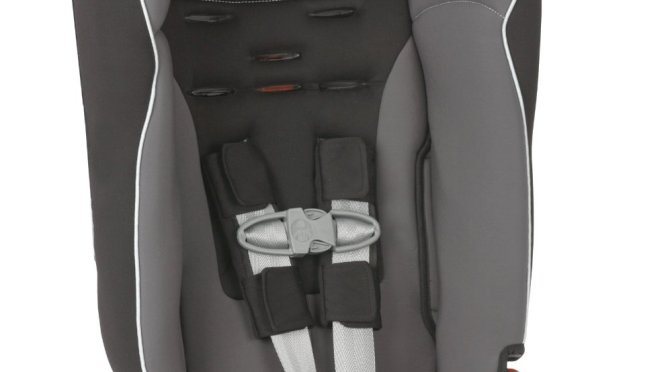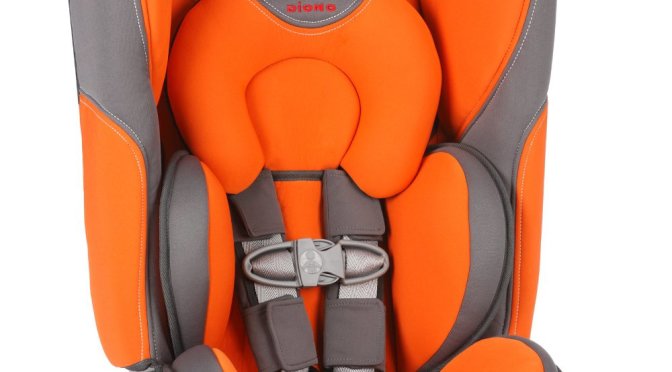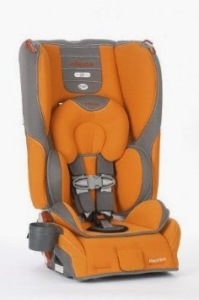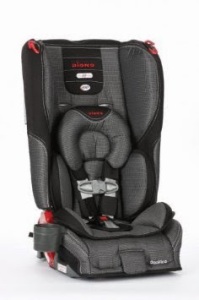When it comes to car safety, you can focus on driving safely and you can focus on choosing a safe car. However, if you have children, you also need to focus on choosing a safe car seat. This is one of a series of reviews I’ll write on what I consider to be the best car seats currently available in the United States.
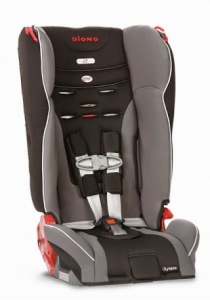 2015 Diono Olympia – Should I buy it?
2015 Diono Olympia – Should I buy it?
The Diono Olympia is another narrow and highly useful car seat released by Diono to respond to the clamor for seats that permit extended rear facing in the United States. It’s a convertible car seat, which means it can be used in several configurations, including as a rear-facing infant seat, a forward-facing seat, and of course, as a booster. Released in May alongside its higher weight siblings the Rainier and Pacifica, the Olympia is a high quality car seat that you’ll certainly be hearing more of.
Buy the Diono Olympia on Sale at Amazon.
Limits for Weight and Height
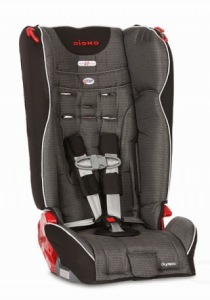
Rear-facing: From 5-45 pounds, and up to 44″ in height. Your child’s head should not reach past 1.5″ below the top of the headrest. I measure the shell height at 25″ again, which is consistent with previous Dionos and which makes sense since the general height limit by Diono remains unchanged from that of previous models.
Forward-facing: From 20-70 pounds, and up to 57″ in height. Your child should be at least 1, and it’s recommended that s/he is at least 2. Of course, research into car safety indicates children should remain rear-facing for as long as possible (the average is 4 years in Sweden, which posts the lowest child fatality rate on Earth), and after rear-facing, the child should remain forward-facing as long as possible.
Booster mode: 50-110 pounds, and up to 57″ in height. As with the previous Radian line, the shoulders of the child must at least reach the 4th pair of harness slots. Remember that children should remain in booster seats until their seat belts fit them over the shoulder, across the chest, and flat on the upper thighs.
Dimensions of the Diono Olympia
As with the Diono Rainier, the seat is 18.5″ wide at its widest point, which is at the shoulders. The seat weighs 25 pounds. Inside, it is around 14″ wide at the widest upper portion at the shoulders and slightly larger at the thighs.
Using the Diono Olympia
Just as with the Pacifica or Rainier, the Olympia arrives folded securely in a box that seems well designed for it, which makes sense when one considers that the seat takes up almost exactly the same amount of space as its ancestors, the Radian R120 and RXT. I was getting ready for a tricky installation, but it turns out that Diono has worked to simplify the process, which was a welcome surprise.
You will probably need to adjust the straps out of the box, but the learning curve is better than it used to be. Depending on the size of your child, you might keep or remove the harness pads. Per Diono, they are supposed to be used in the 5-point harness only when the child weighs more than 65 pounds.
Keep in mind that you cannot install it in the center of your vehicle with a LATCH set up unless you have dedicated LATCH hookups there; this is common to almost every car seat on the market today in the United States. This means you’ll need to use a seat belt installation along with a locking clip for a middle seat install, and this might be a bit troublesome. Newer seat belts typically lock when extended all the way, so this might not apply in your case.
There are 5 shoulder harness positions that range from 9″ on the low end to 17.5″ on the high end. The recline base must be used when the seat is in a rear-facing position. Because there are 5 different slots for harness height, most children are going to find a position that fits them comfortably for as long as they use the seat. You adjust the harness height from behind the seat by removing straps from the splitting plate and rethreading them into the desired slot. If your child is rear-facing, the slots need to be at or below the shoulders, while they need to be above for forward-facing. Diono is unique in that they do allow you to have forward-facing children with shoulders above the top shoulder harness slots as long as these children stay within the forward-facing weight limit and have the tops of their ears below the top of the car seat.
There is an angle adjuster that is frequently sold alongside the Diono line, as it helps cut down on the extremely large amount of space that the seat can take up when used in the rear-facing configuration. Depending on the size of your vehicle and the amount of space you need in the front seats, you may want to consider purchasing this. This is likely to be the case if you set the seat up directly behind the passenger or driver seats in the first row.
Buy the Diono Olympia on Sale at Amazon.
Why Buy the Diono Olympia?
This is the meat and potatoes of this car seat. The Olympia is one of a handful of seats in the United States that allows you to rear-face a child for up to 45 pounds. As I’ll note further below, this isn’t quite as good it gets, but every pound is precious, as the longer you rear-face, the safer your child is. In the US, parents tend to turn their children around into the line of fire at 1. In Sweden, this typically isn’t done until 4. Children in Sweden are far less likely to die in car crashes than children in the US. It makes that much of a difference. This alone is reason enough to buy the Rainier.
Besides that fact, the Olympia also includes a steel frame and an aluminum reinforced headrest for reinforced head support, in addition to EPS foam around the child’s head and body to increase levels of side impact protection. The sidewalls are not as deep as those in its Rainier sibling, which means potentially less side protection is available. However, it already meets current federal standards, so the benefits of the additional padding in the Rainier are yet to be seen.
However, I do have to note that the two higher weight siblings of the Olympia, the Pacifica and Rainier, have the largest forward-facing capacity of any 5-point harness car seat currently sold in the United States at 20-90 pounds with up to 57″ of height. Each transition in child seats signifies a decrease in safety (e.g., rear-facing is safer than forward-facing, which is safer than a booster position, which is safer than simply using a seat belt); the longer you can keep a child forward-facing in a harness, the better.
The Rainier and Pacifica now lead the field here, which means that if you choose the Olympia, you’re giving up 5 extra pounds of rear-facing ability, 20 pounds of harnessed forward-facing, and 10 pounds of booster time for your child. However, the Olympia is significantly cheaper than the Rainier or Pacifica, and it does offer many of the same benefits for less cost.
Something else that’s neat about the Olympia is that it’s one of only a handful of seats in the United States that can currently be tethered while rear-facing as well as while forward-facing. It isn’t required to rear-face tether, but rear-facing tethering does have its advantages, which I’ll discuss in a forthcoming article.
Finally, the Olympia is also simply an easier seat to install than most, due to its narrow base width of 17 inches. That means it’s actually possible to install 3 across in a number of mid-sized vehicles. I also like the fact that it has a 12-year usable life when used as a booster seat (remember, car seats do expire eventually), which is the longest in the industry right now, although I wish the harness lifespan were longer than 8 years.
The Olympia is an excellent car seat and, in my opinion, one of the best currently available in the United States for children between zero and five. It doesn’t allow you to rear-face or harness forward-face as long as its siblings the Pacifica and Rainier do, so I would recommend those if you can afford to spend a little more. If you can’t, however, or aren’t looking for those features, it is a fine choice for a car seat. You can buy the Diono Olympia in the two colors above here. Canadians can buy the Olympia here.
—
If you find the information on car safety, recommended car seats, and car seat reviews on this car seat blog helpful, you can shop through this Amazon link for any purchases, car seat-related or not. Canadians can shop through this link for Canadian purchases.

